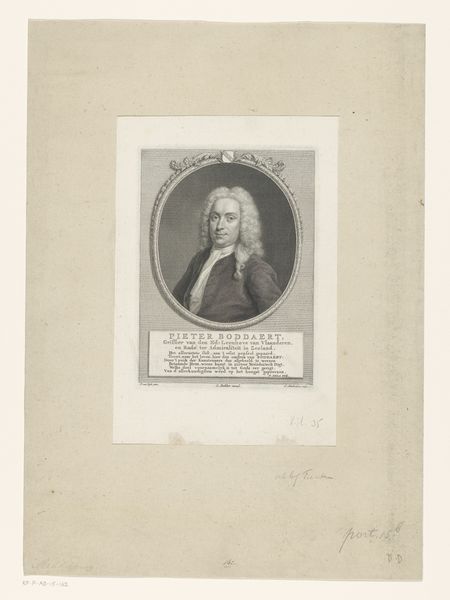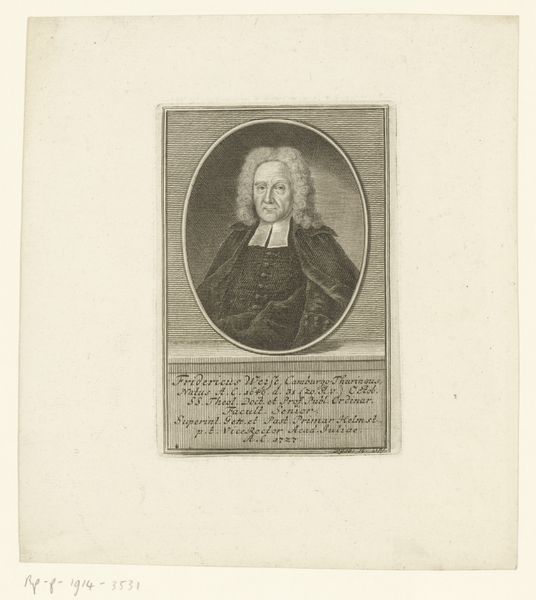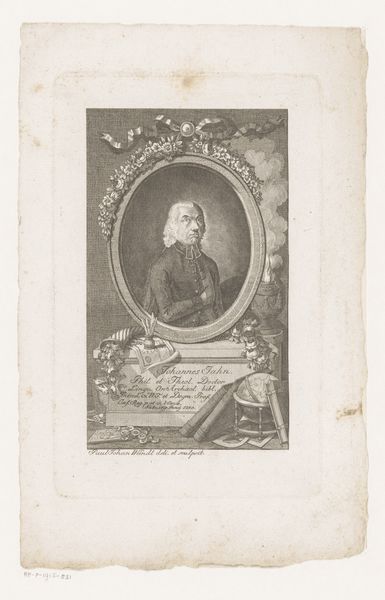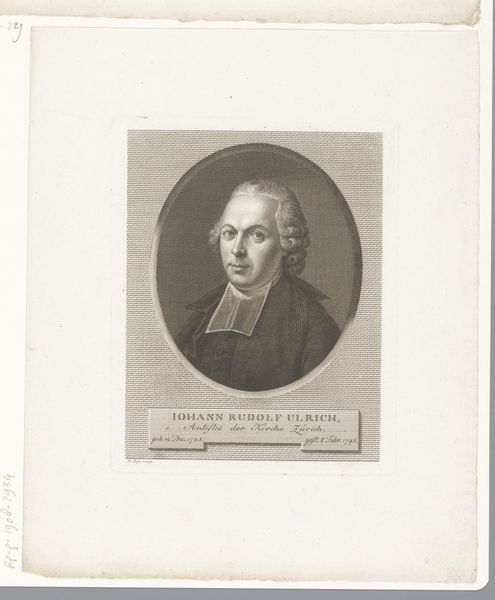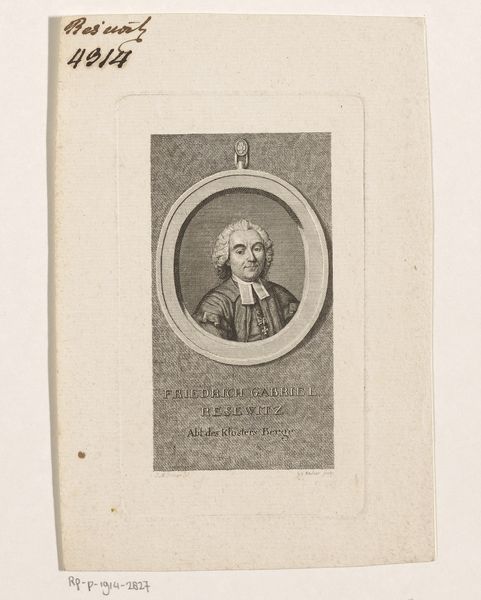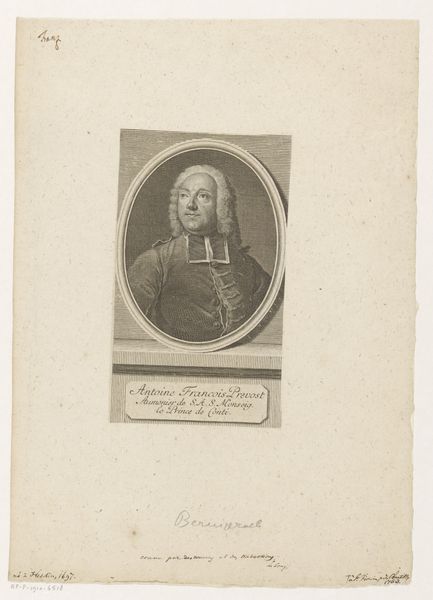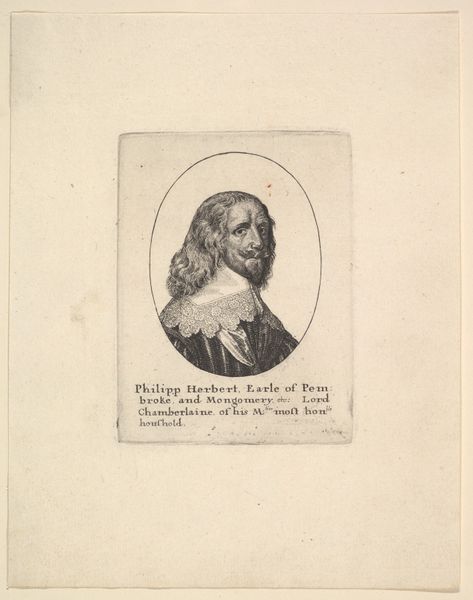
print, paper, ink, engraving
#
portrait
#
baroque
#
dutch-golden-age
# print
#
old engraving style
#
paper
#
form
#
ink
#
line
#
engraving
Dimensions: width 209 mm, height 294 mm
Copyright: Rijks Museum: Open Domain
Curator: This engraving, “Portret van Balthasar Bekker,” attributed to Pieter van Gunst, and currently housed in the Rijksmuseum, presents us with a striking figure rendered with remarkable precision in ink on paper. The dating is somewhat broad, circa 1673 to 1714. Editor: My first impression is one of austere intelligence. There's a weight to his gaze and a somberness conveyed by the monochrome palette and meticulous linework. It feels very much like a psychological study, a man grappling with serious ideas. Curator: The composition itself is noteworthy. Encapsulated within a tondo set inside a rectilinear frame, Bekker’s form creates a captivating push and pull of geometric relationships. Note the intricate detailing in the rendering of his face. The delicate cross-hatching builds volume and describes texture masterfully, achieving remarkable depth within the limited tonal range. Editor: Beyond the purely formal aspects, Bekker himself is a significant figure. His writings challenged popular beliefs about the devil and witchcraft, beliefs deeply embedded in the cultural consciousness of the time. This image, therefore, becomes an emblem of intellectual courage. The sternness in his eyes reflects the weight of that challenge. Curator: Yes, and the engraving technique, with its dependence on precisely controlled lines, ironically echoes Bekker’s own rational and systematic approach to knowledge. Consider the formal restraints, the almost scientific approach to capturing likeness—a perfect visual complement to Bekker’s intellectual project. Editor: I am also drawn to his clerical collar—an explicit marker of religious identity, which, given his controversial views, adds another layer to our understanding. It reminds us of the tension between institutional authority and individual thought, a tension so raw it still resonates centuries later. Curator: A keen observation. The image is deceptively simple, isn't it? On one level, a study in line and form, yet it becomes, under scrutiny, a portrait of complex cultural forces and individual conviction. Editor: Indeed. Seeing this, it is a striking testament to the power of portraiture. A testament to the ability of art to freeze moments of transition in social thinking for examination in the future.
Comments
No comments
Be the first to comment and join the conversation on the ultimate creative platform.
